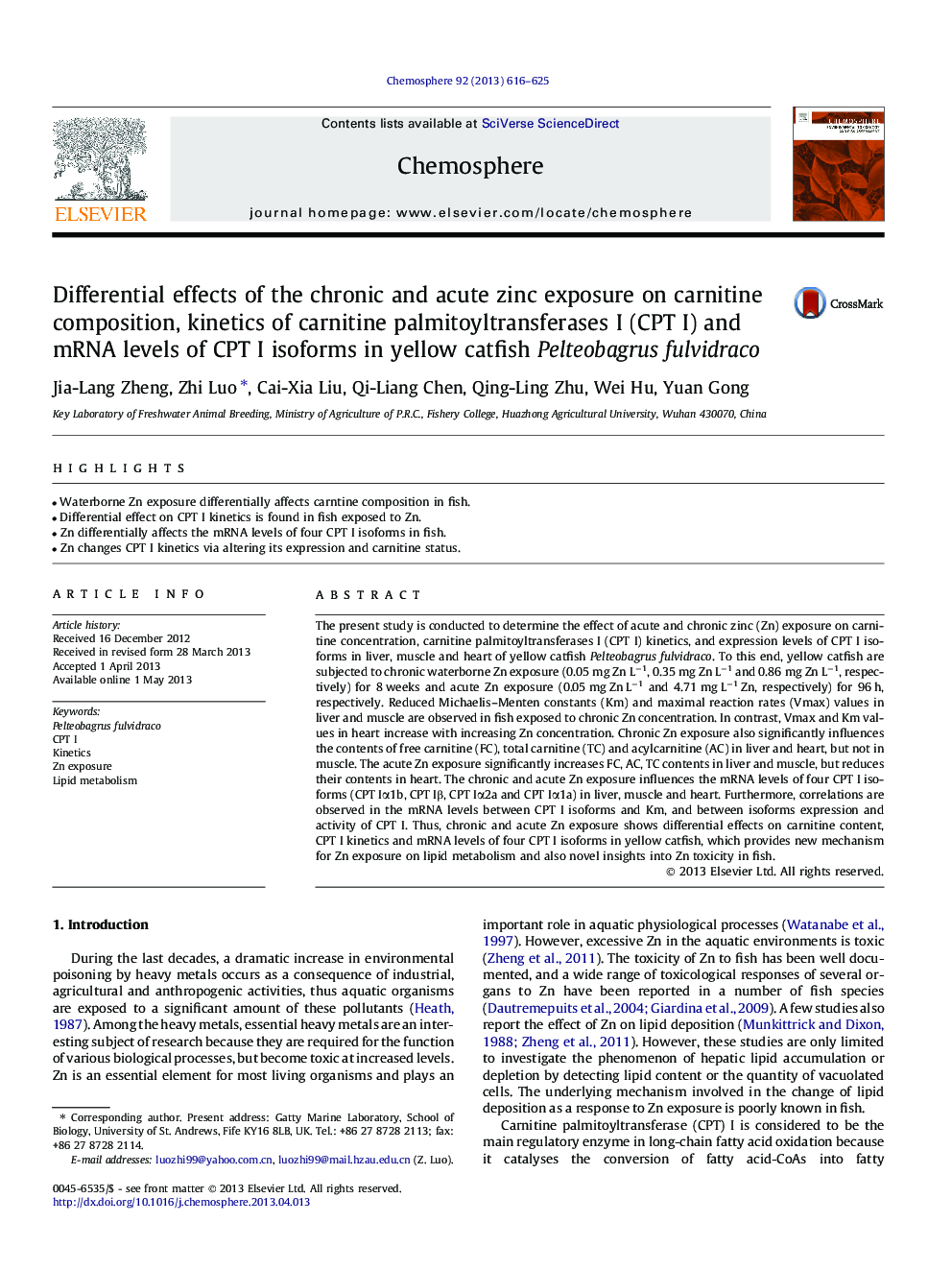| Article ID | Journal | Published Year | Pages | File Type |
|---|---|---|---|---|
| 6310467 | Chemosphere | 2013 | 10 Pages |
Abstract
The present study is conducted to determine the effect of acute and chronic zinc (Zn) exposure on carnitine concentration, carnitine palmitoyltransferases I (CPT I) kinetics, and expression levels of CPT I isoforms in liver, muscle and heart of yellow catfish Pelteobagrus fulvidraco. To this end, yellow catfish are subjected to chronic waterborne Zn exposure (0.05 mg Zn Lâ1, 0.35 mg Zn Lâ1 and 0.86 mg Zn Lâ1, respectively) for 8 weeks and acute Zn exposure (0.05 mg Zn Lâ1 and 4.71 mg Lâ1 Zn, respectively) for 96 h, respectively. Reduced Michaelis-Menten constants (Km) and maximal reaction rates (Vmax) values in liver and muscle are observed in fish exposed to chronic Zn concentration. In contrast, Vmax and Km values in heart increase with increasing Zn concentration. Chronic Zn exposure also significantly influences the contents of free carnitine (FC), total carnitine (TC) and acylcarnitine (AC) in liver and heart, but not in muscle. The acute Zn exposure significantly increases FC, AC, TC contents in liver and muscle, but reduces their contents in heart. The chronic and acute Zn exposure influences the mRNA levels of four CPT I isoforms (CPT Iα1b, CPT Iβ, CPT Iα2a and CPT Iα1a) in liver, muscle and heart. Furthermore, correlations are observed in the mRNA levels between CPT I isoforms and Km, and between isoforms expression and activity of CPT I. Thus, chronic and acute Zn exposure shows differential effects on carnitine content, CPT I kinetics and mRNA levels of four CPT I isoforms in yellow catfish, which provides new mechanism for Zn exposure on lipid metabolism and also novel insights into Zn toxicity in fish.
Related Topics
Life Sciences
Environmental Science
Environmental Chemistry
Authors
Jia-Lang Zheng, Zhi Luo, Cai-Xia Liu, Qi-Liang Chen, Qing-Ling Zhu, Wei Hu, Yuan Gong,
